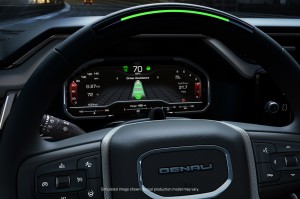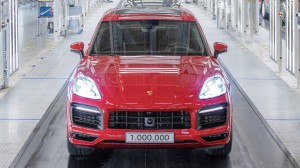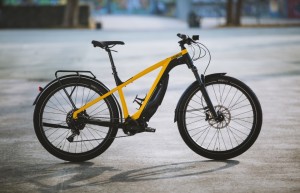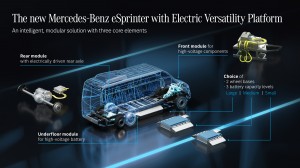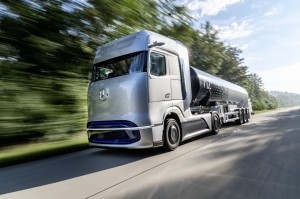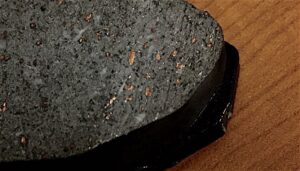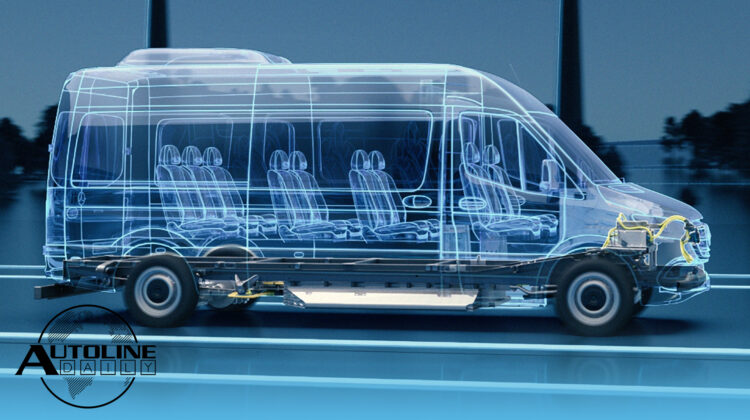

Follow us on social media:
Runtime: 10:23
0:38 Japanese Automakers Could Lose Stranglehold on ASEAN Market
1:13 McLaren Considering Reverse Merger to Raise Money
2:00 Hottest Performing Automotive Stocks
3:17 Driverless Cruise Vehicles Hit San Francisco Streets
4:08 GMC Sierra Gets Super Cruise
4:30 Porsche Builds 1 Millionth Cayenne
5:27 Ducati Bringing Its eBikes to the U.S.
7:04 Mercedes Reveals Next-Gen eSprinter Platform
7:45 Daimler Jointly Developing Liquid Hydrogen Refueling
9:03 Performance Camaro Has Too Much Copper in Brakes
Visit our sponsors to thank them for their support of Autoline Daily: BorgWarner; Bridgestone, Hyundai and Intrepid Control Systems.
This is Autoline Daily, the show dedicated to enthusiasts of the global automotive industry.
JAPANESE AUTOMAKERS COULD LOSE STRANGLEHOLD ON ASEAN MARKET
We start out today in the ASEAN market. That’s the region of southeast Asia that includes countries like Vietnam, the Philippines and Thailand. It’s a pretty big car market: 4 million new vehicles a year. That’s more than Germany. Right now Japanese automakers dominate the ASEAN market with 80% market share. But LMC Automotive predicts the Japanese will lose a lot of that share because Chinese and Korean automakers are investing heavily in the region. And ASEAN countries are welcoming that investment with open arms.
MCLAREN CONSIDERS REVERSE MERGER TO RAISE MONEY
You’d think that selling super expensive sports cars to super rich people would be a ticket to paradise. But not for McLaren. It’s losing money and needs to raise $666 million to restructure its finances. McLaren’s car sales got clobbered because of the pandemic, which also hurt income from its racing activities, especially Formula One. One thing that McLaren hopes will turn its fortunes around is its first hybrid hyper car, the Artura. It goes on sale next year and all of McLaren’s future cars this decade will come off this platform. But even that’s not enough. McLaren is not publicly traded, but it’s considering a reverse merger to raise the money it needs.
HOTTEST PERFORMING AUTOMOTIVE STOCKS
Speaking of stocks, the hottest automotive shares yesterday were Chargepoint and Linamar. Chargepoint operates EV charging stations in North America and Europe, and trades under the name Switchback Energy Acquisition, which is the SPAC it used to go public. Shares closed at $43, up 11.4%. Last month alone the stock was up 140%. Linamar, the Canadian manufacturing company, closed at $53.84, up 4.9%. It’s up 70% over the last three months. And this shows that Tesla is not the only automotive stock that offers fantastic investing opportunities.
DRIVERLESS CRUISE VEHICLES HIT SAN FRANCISCO STREETS
Back in October, GM’s autonomous unit Cruise, got permission from the state of California to test self-driving cars on public roads without a safety rider on board. And now Cruise CEO, Dan Ammann, says they just deployed their first driverless Chevy Bolt’s in limited areas on the streets of San Francisco. It will slowly expand to other parts of the city, operating at different times of the day, over the next several months. Cruise originally planned to launch its self-driving service at the end of last year but ended up delaying it because more testing was needed. While it still hasn’t announced a new date to begin the service, Ammann did say “…I think you’re going to see things move relatively quickly and I think next year is going to be a pretty exciting year.” Sounds to us like it’s not too far off.
GMC SIERRA GETS SUPER CRUISE
And in somewhat related news, GMC announced that it will start offering Super Cruise in the Sierra starting in 2022. The hands-free driver assistance system will first be available on Denali models and will even work while towing. GM plans to offer Super Cruise on 22 models over the next three years.
PORSCHE BUILDS 1 MILLIONTH CAYENNE
Porsche purists were horrified when the automaker introduced the Cayenne SUV eighteen years ago. Yes, 18 years ago! But it’s now one of Porsche’s most successful models and the one millionth Cayenne just rolled off the production line, a GTS model built in Slovakia. To celebrate, the company put together a 10-minute video that details the history of the model and includes some interesting info about its development. It was given the code name “Colorado” and was created in cooperation with Volkswagen because it did not want to create an SUV on its own, since the company didn’t have any experience with SUVs. Porsche also created the Cayenne to tap into the Chinese market because customers there weren’t interested in two-seat cars. Porsche customers eventually accepted the Cayenne and in 2019 more than 90,000 were sold worldwide.
DUCATI BRINGS ITS eBIKES TO THE U.S.
Ducati launched electric bicycle sales in Europe several years ago. And now the motorcycle maker is bringing them to the U.S. and will sell them through its dealerships. Two models will be available by the end of the month, the E-Scrambler and the MIG-S. The E-Scrambler, which is designed for the city, features a 250-watt motor and 504 Wh battery and has a $4,000 price tag. The MIG-S is a mountain bike that costs $5,200. Another model will arrive in February. Ducati isn’t the only motorcycle company jumping into the ebike segment. Harley-Davidson created a subsidiary for ebikes called Serial 1. Not only will it sell the bikes online but also through select Harley dealers.
Don’t miss Autoline After Hours later today when Bill Warner and Ray Evernham will be our guests. Bill is the founder of the Amelia Island Concours and Ray is a NASCAR Hall of Famer. We’ll be talking about the future of hyper cars and motor racing and a whole host of other topics. So join John and Gary when we go live at 3 pm eastern time on our website or YouTube channel.
MERCEDES REVEALS NEXT-GEN eSPRINTER PLATFORM
Mercedes revealed that the next-generation of its all-electric Sprinter van will ride on a new architecture, called Electric Versatility Platform. The automaker invested 350 million euro in the platform, which comes in two wheelbases, three battery sizes and with an eAxle that provides rear-wheel drive. Previous eSprinters were front-wheel drive. It also integrated all the high-voltage components into the front-end assembly to allow for a number of different body types. Unfortunately, none of the specs on these items were released. But, in a bit of good news, the new eSprinter will be offered in the U.S. and Canada.
DAIMLER JOINTLY DEVELOPING LIQUID HYDROGEN REFUELING
Now we shift over to Mercedes’ parent company Daimler. The other day we reported how the company plans to use liquid hydrogen in its next-gen fuel cell trucks, but wondered where the heck they were going to fill up at. Now we have an answer. Daimler has signed an agreement with Linde to jointly develop new liquid-hydrogen refueling technology. They’re working on a new process that addresses many of the issues facing liquid-hydrogen. Its system will use higher than ambient pressure levels and special temperature control to avoid boil off. If liquid hydrogen is not stored at cryogenic temperatures it starts to boil and the gas can escape the tank. But the tank is one of the benefits of using hydrogen in its liquid form. You don’t have to have those super strong tanks. They’re smaller and lighter, but at the same time, more hydrogen can be carried because the tank can be form-fit to a given space. The last reason Daimler is using liquid hydrogen is that it has a higher energy density than gaseous hydrogen. Because of that it expects performance to be comparable to a diesel truck. Daimler expects the first pilot station to pop up in Germany in 2023 and for series production to kick off in the 2nd half of the decade.
PERFORMANCE CAMAROS HAVE TOO MUCH COPPER IN THE BRAKE PADS
Back in 2015, the EPA launched the Copper-Free Brake Initiative with the goal of reducing the amount of copper used in brake pads. The metal is used because it dissipates heat well and can help reduce brake squeal, but the dust produced during braking is not good for the environment. So, automakers agreed they’d cut copper to less than 5% by weight by 2021 and 0.5% by 2025. Well, that’s now leading to problems for potential Camaro customers in California and Washington. Those states will start banning vehicles with too much copper in their brakes in January and right now the SS and ZL1 versions of the Camaro fit into that category. Chevy says it’s aware of the situation and is working on a new system that complies. But those versions of the Camaro won’t be available in California and Washington again until 2022.
But that’s a wrap for today. Thanks for watching and we hope to see you again tomorrow.
Thanks to our partner for embedding Autoline Daily on its website: WardsAuto.com
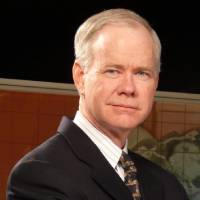
John McElroy is an influential thought leader in the automotive industry. He is a journalist, lecturer, commentator and entrepreneur. He created “Autoline Daily,” the first industry webcast of industry news and analysis.






